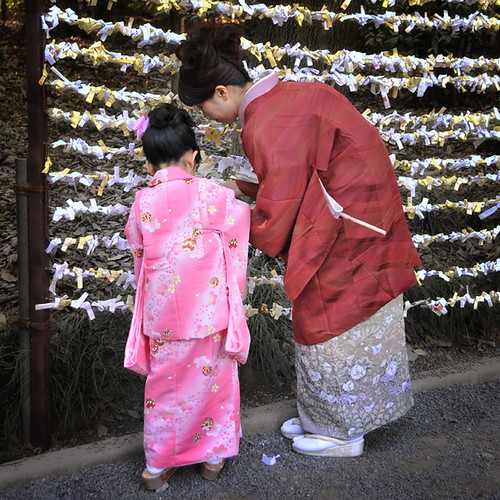The celebration of the New Year Japanese-style is filled with many fun activities which are believed to bring good fortune for the coming year. Sadly, the most important activity of ringing in the New Year in Japan cannot be done in New York City, as there are no Shinto Shrines. The turn of the New Year marks the day of Hatsumoude, the first visit to the shrine. Most people go from after midnight until noon on New Year’s Day. Men and women both dress in traditional clothing, Hakama and Kimono, respectively.

At the Shrine, they pray for success and wellbeing within the next year. They also receive a fortune, which tells how their year will turn out. It is customary to keep the fortune until the next Hatsumoude, and burn it at the shrine after recieving the near one. It is a fortune with a one-year-long expiration date.
Another thing that cannot be done which many Japanese people are upset about is Jyoya no Kane. On midnight on December 31st, Buddhist temples all over Japan ring their bells a total of 108 times to symbolize the 108 human sins in Buddhist belief, and to get rid of the 108 worldly desires regarding sense and feeling in every Japanese citizen. A major attraction is The Watched Night bell in Tokyo. Japanese believe that the ringing of bells can rid off their sins during the previous year. With no bells in America, many Japanese people feel that they cannot truly get rid of their bad luck. In Japan, after they are done ringing the bells, they celebrate and feast on soba noodles, which Japanese people in New York City can still do too. You can read more about the soba noodles in the food section.

On a side note, just in case you are interested, the largest torii gate in Japan is the one in front of the Heian Shrine.It was built in 1929 and measures a whopping 80 feet. The gate is located in Eastern Kyoto, which is the most religiously traditional city existing in Japan today. When Shintoism was widely and seriously practiced (before the Meiji revolution) Kyoto was the capital of Japan. Obviously, it retains much religious influence today.



